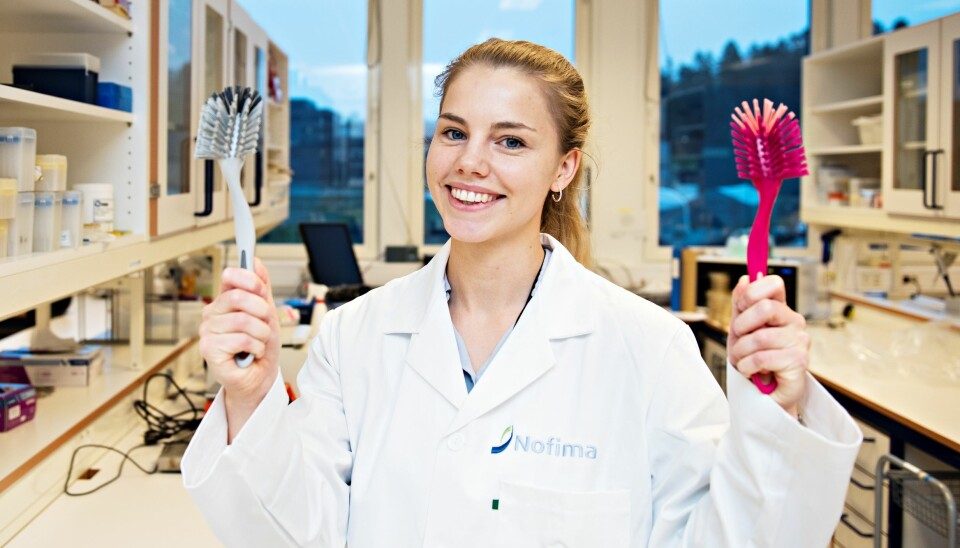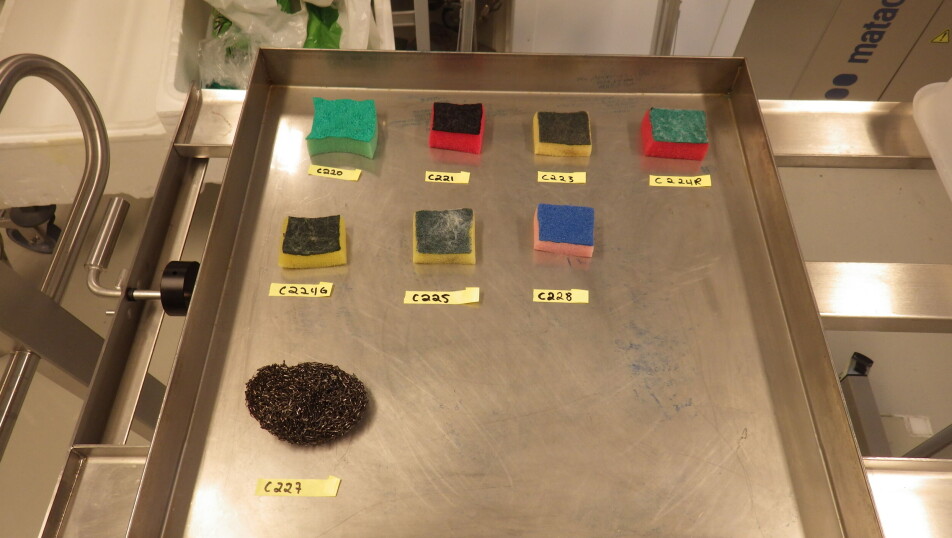THIS ARTICLE/PRESS RELEASE IS PAID FOR AND PRESENTED BY Nofima The Norwegian Institute of Food, Fisheries and Aquaculture Research - read more

What's more hygienic - doing your dishes with a brush or a sponge?
Sponges and brushes are used to clean dishes and keep you safe, but sponges can in some cases be vectors that collect and transfer harmful bacteria.

While people in Norway and Denmark traditionally use brushes for washing up, sponges are much more common in many other European countries.
Two recent studies show that bacteria can grow and survive for longer periods in humid sponges compared to brushes, probably due to a more rapid drying of the brushes.
“Sponges are the preferred cleaning utensil for manual dish washing in many countries, but brushes may be a better alternative for safety reasons,” scientist Dr. Trond Møretrø from Nofima says. He has been involved in the SafeConsume project and has been the leading scientist for the two studies.
In the European project SafeConsume, a web-based study was performed to map how people wash their dishes in 10 European countries. Also, laboratory analyses with new and used sponges and brushes were performed to reveal their drying characteristics and the growth and survival of the food pathogens Salmonella and Campylobacter.
More bacteria in sponges
Brushes dried considerably faster than sponges. In experiments where bacteria were added to new sponges and brushes, bacteria grew to high levels in humid sponges, and Salmonella survived more than one week in two of three types of sponges tested. On brushes, all types of bacteria died over time and Campylobacter and Salmonella died to below the detection limit after one and three days, respectively. Salmonella also died on used brushes collected from consumers but it survived in sponges.
Experiments also showed that soaking in chlorine, cleaning in dishwasher, and boiling are effective in cleaning contaminated sponges and brushes.
“Sponges dry slowly and create a humid and nutrient-rich environment with good conditions for bacterial growth and survival, while bacteria do not thrive in brushes that dry fast," Dr. Møretrø says.

Big differences between countries
The type of utensil used for dishwashing varied considerably between countries. While brushes were most common in Norway and Denmark, the use of sponges dominated in Romania, Hungary, Greece, France, Portugal, Spain, Germany and the UK. People were asked about why and when the changed their sponge for a new one. Most people change their sponge at regular times, 71 per cent changed after three days or more.
“These findings suggest that there is a need to make people in some countries aware that sponges are not very hygienic and that the use of brushes should be encouraged,” Møretrø concludes.
See more content from Nofima:
-
Red algae grown in wastewater from fish-farming facilities could become sustainable salmon feed
-
Pumpkins are good for more than just Halloween decorations
-
This is how temperature affects a salmon's health and growth
-
Study: Omega-3 and zinc is a powerful duo for salmon
-
Fish may turn yellow if frozen too fresh
-
Is it better if food is packaged in plastic or paperboard?






































